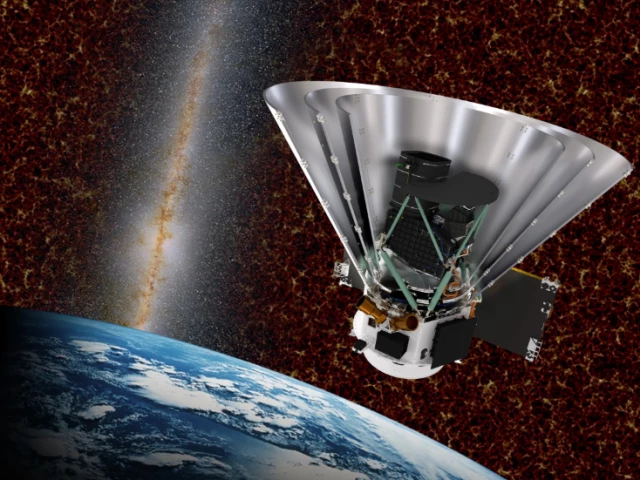NASA's SPHEREx telescope captures first images, offering glimpse into the infrared universe
NASA’s new telescope begins mapping the Cosmos in 102 Infrared colors and could see 100,000 galaxies at once

NASA's new space telescope, SPHEREx, has successfully captured its first images from space, offering a striking early look at the cosmos and marking a major milestone in the mission’s journey to explore the origins of the universe.
Launched on 11 March, the Spectro-Photometer for the History of the Universe, Epoch of Reionization and Ices Explorer—better known as SPHEREx—has now powered up its ultra-cold infrared detectors and begun its initial observations.
Though still uncalibrated, the first images from SPHEREx reveal a breathtaking view filled with stars and galaxies—more than 100,000 sources visible in each frame. Every SPHEREx exposure includes six images captured by its detectors, collectively covering a field about 20 times wider than the full Moon.
“This is the high point of spacecraft checkout; it’s the thing we wait for,” said Beth Fabinsky, SPHEREx’s deputy project manager at NASA’s Jet Propulsion Laboratory (JPL). “There’s still work to do, but this is the big payoff. And wow! Just wow!”
Unlike visible light telescopes such as Hubble, SPHEREx detects infrared light, revealing phenomena invisible to the human eye. Each of the telescope’s six detectors records light in 17 different wavelength bands—offering a total of 102 infrared hues. These variations allow astronomers to decode the chemical makeup of cosmic objects and estimate their distances.
“This data will allow us to study everything from galaxy formation to the origins of water,” explained Olivier Doré, SPHEREx project scientist at Caltech and JPL. “Our spacecraft has opened its eyes on the universe. It’s performing just as it was designed to.”
The team has spent the past two weeks confirming the spacecraft's systems are functioning correctly and cooling the detectors to approximately –350°F (–210°C). This extreme cold is essential for capturing delicate infrared signals, which could otherwise be drowned out by thermal radiation.
SPHEREx’s mission includes mapping the full sky four times over two years. By using a method called spectroscopy, it will measure the light from hundreds of millions of stars and galaxies, potentially unlocking new information about:
The large-scale structure of the universe
The mysterious Epoch of Reionization
The distribution of ices and organic molecules in our galaxy
This includes investigating how elements like water, carbon dioxide, and methane—crucial for life—are distributed across interstellar dust.
While telescopes like Hubble and the James Webb Space Telescope offer deep, focused views of specific regions, SPHEREx is a broad-survey instrument, designed to scan vast areas of space. Its wide-angle perspective will help identify promising targets for further investigation by more focused telescopes.
“Based on the images we are seeing, we can now say that the instrument team nailed it,” said Jamie Bock, SPHEREx principal investigator at Caltech and JPL. “I’m rendered speechless.”
The spacecraft was built by BAE Systems (formerly Ball Aerospace), with Caltech overseeing the integration of its scientific instruments. A team of scientists from 10 U.S. institutions, as well as South Korea and Taiwan, will lead the mission’s data analysis. All findings will be processed and archived at Caltech’s IPAC Infrared Science Archive, and made publicly available.
SPHEREx is managed by NASA’s Jet Propulsion Laboratory for the agency’s Astrophysics Division, with data expected to enhance our understanding of cosmic history and the conditions that led to life in the universe.



















COMMENTS
Comments are moderated and generally will be posted if they are on-topic and not abusive.
For more information, please see our Comments FAQ